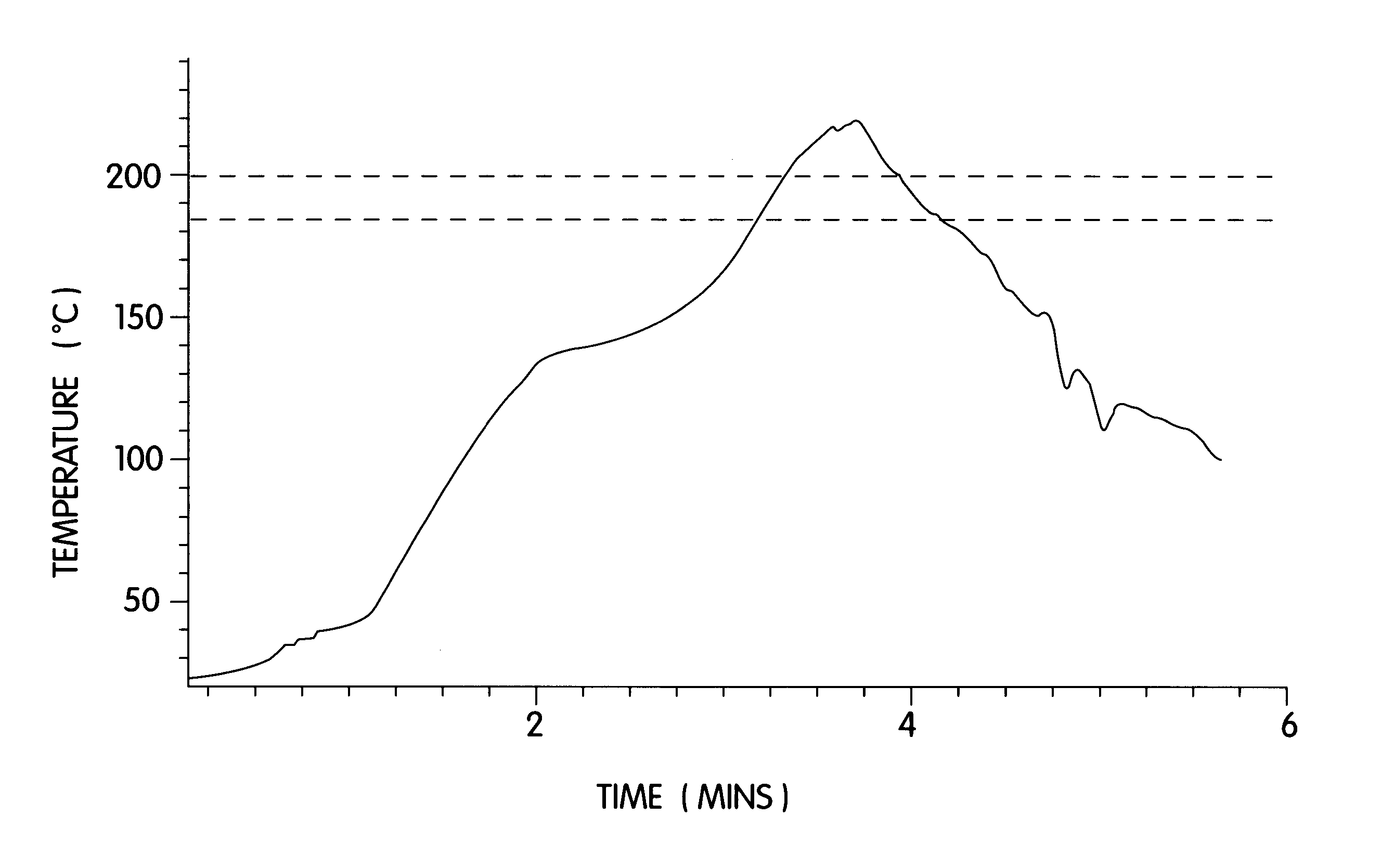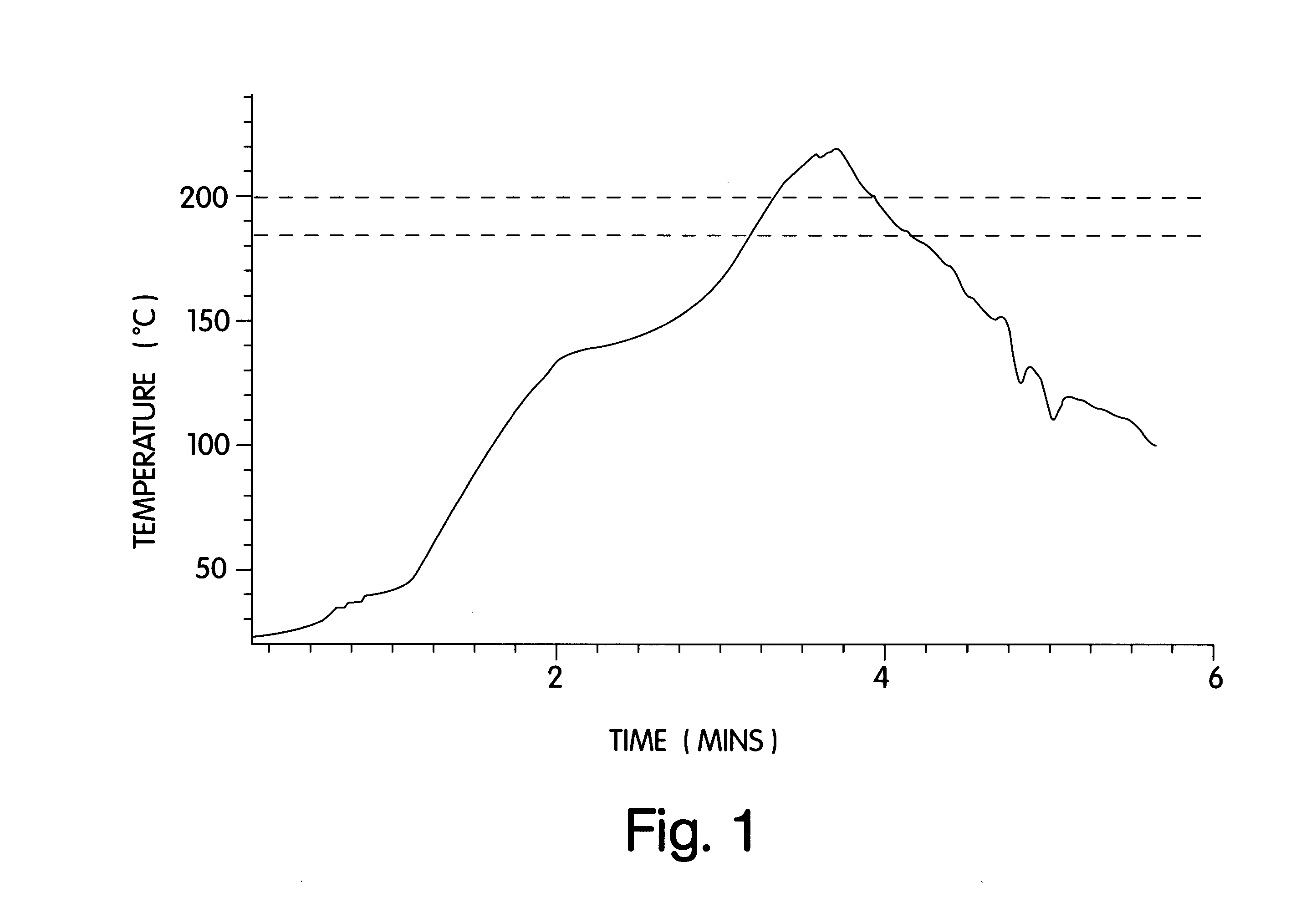Printed circuit board manufacture
a printed circuit board and manufacturing technology, applied in the direction of printed circuit assembling, resistive material coating, machines/engines, etc., can solve the problems of increasing the risk of electrical failure, and undesirable extra steps in the removal of protective coating
- Summary
- Abstract
- Description
- Claims
- Application Information
AI Technical Summary
Problems solved by technology
Method used
Image
Examples
example 2
A silver plating solution was prepared by forming a solution comprising 50 g EDTA, 20.4 g NaOH, 14 g Ethylan HB4 (Akros Chemicals), 3 g Crodamet 02 (Croda Chemicals) in 800 mls deionized water. To this solution was added a solution of 1 g AgNO.sub.3 in 100 mls deionized water. The pH was adjusted to 6.8 by addition of dilute NaOH / HNO.sub.3, then made up to 1 litre with deionized water.
Double sided bare copper boards were coated with the above solution using the procedure as described in Example 1. 100% filling of plated through-holes with solder was achieved during wave soldering with NR300 flux after passage through 3 IR reflow profiles.
Boards stored at 40.degree. C. / 93% RH for 24 hours prior to passage through 3 IR reflow profiles showed no evidence of tarnishing and soldered well during wave soldering trials, giving 100% hole filling.
example 3
Double-sided bare copper boards were coated using the bath composition and procedure as described in Example 1. Following removal of the boards from the silver plating solution and rinsing, the boards were immersed in a solution of 4 g Reomet 42 (Ciba-Geigy) in 1 litre deionized water (pH 7) for 1 minute at room temperature. The boards were then rinsed in tap water and warm air dried. A bright even silver coating was produced.
The coated boards were stored at 40.degree. C. / 93% RH for 24 hours then passed through 3 IR paste reflow profiles. The boards showed no evidence of tarnishing, and soldered well when wave soldered using KR 300 flux.
example 4
Coupons of copper strip (5 cm.times.1 cm) were coated with the silver coating as described in Example 2. In addition, further samples were coated with immersion tin, 63 / 37 Sn / Pb and two competitors solderability preservative coatings based on substituted benzimidazole chemistry. The following coating procedures were applied for the various samples:
Immersion Tin Coating
Coupons were etched in an aqueous solution of Na.sub.2 S.sub.2 O.sub.8 (5%), H.sub.2 SO.sub.4 (5%) for 2 minutes, rinsed with tap water, then rinsed with 10% H.sub.2 SO.sub.4, for 1 minute and then rinsed with deionized water. The coupons were then immersed in an immersion tin plating solution comprising 0.33 g / l Sn(BF.sub.4).sub.2, 150 g / l thiourea, 20 g / l fluoroboric acid and 5 g / l Synparonic NP9 (ex. ICI) in deionized water, for 1 minute at room temperature. The coupons were then rinsed with deionized water and warm air dried.
Sn / Pb Coating
Coupons were etched in an aqueous solution comprising Na.sub.2 S.sub.2 O.sub.8...
PUM
| Property | Measurement | Unit |
|---|---|---|
| concentration | aaaaa | aaaaa |
| concentration | aaaaa | aaaaa |
| concentration | aaaaa | aaaaa |
Abstract
Description
Claims
Application Information
 Login to View More
Login to View More - R&D
- Intellectual Property
- Life Sciences
- Materials
- Tech Scout
- Unparalleled Data Quality
- Higher Quality Content
- 60% Fewer Hallucinations
Browse by: Latest US Patents, China's latest patents, Technical Efficacy Thesaurus, Application Domain, Technology Topic, Popular Technical Reports.
© 2025 PatSnap. All rights reserved.Legal|Privacy policy|Modern Slavery Act Transparency Statement|Sitemap|About US| Contact US: help@patsnap.com


